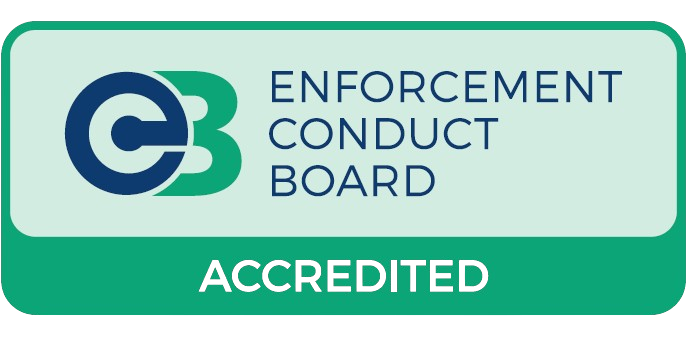Lease Forfeiture of Commercial Premises – Legal Guidance
When a tenant breaches a lease, landlords may be able to forfeit(end) the lease and recover the premises. This page explains what can be forfeited, the role of a forfeiture clause, when a section 146 notice is required, how peaceable re-entry works for commercial units, the risk of waiver, and relief from forfeiture. It also covers residential restrictions (for long leases), insolvency limits, and CRAR versus forfeiture.
England & Wales. General guidance for property professionals; not legal advice.
What leases can be forfeited?
Commercial leases
Most commercial leases include a right of re-entry/forfeiture for non-payment of rent and for specified breaches (use, assignment, alterations, repair, etc.). Forfeiture may be by peaceable re-entry(locks changed while unoccupied) or by court proceedings.
Long residential leases (flats)
Forfeiture is heavily restricted. Before serving a s.146 notice for non-rent breaches, the breach normally must be admitted or determined by a court/tribunal (CLRA 2002, s.168). For service-charge/administration-charge arrears, there are additional “final determination” and de minimis thresholds (CLRA 2002, s.167).
Assured/AST & secure tenancies
Residential assured/AST or secure tenancies are not forfeited. They are ended via the Housing Acts (e.g., s.8/s.21 HA 1988 or secure tenancy grounds) with a court order.
Mixed-use premises
If the let premises include a dwelling occupied as a residence, do not attempt peaceable re-entry. A court order is required (Protection from Eviction Act 1977). Where the dwelling is a separate demise , the commercial unit may be forfeited on its own.
What is a forfeiture clause?
A lease must normally reserve a right of re-entry/forfeiture. The clause sets out the breaches that trigger forfeiture and any conditions (e.g., rent unpaid for 14/21/28 days ). Without such a clause, the landlord will usually be unable to forfeit.
- Non-payment of rent: no s.146 notice is required. Check the clause for any grace period and whether formal demand is dispensed with (common in modern leases).
- Other breaches: a s.146 notice is usually required (see below).
- Insolvency limits: during an administration moratorium or insolvency process you may need the court’s or office-holder’s consent before forfeiting.
Section 146 notice (non-rent breaches)
Before forfeiting for a breach other than non-payment of rent, a landlord generally must serve a Law of Property Act 1925, s.146 notice on the tenant. The notice must:
- Specify the breach relied on with sufficient detail; and
- Require remedy if the breach is remediable, allowing a reasonable time ; and
- Require compensation for the breach, if demanded.
Long residential leases: For non-rent breaches, the landlord may not serve s.146 until the breach is admitted by the tenant or determined by a court or the First-tier Tribunal (CLRA 2002, s.168). For service/administration charges and ground rent, further conditions apply (including the trivial sums rule under s.167 and prescribed ground-rent demands).
Forfeiture methods
Non-payment of rent
Other breaches (use/alterations/repair etc.)
Waiver of the right to forfeit
If the landlord affirms the lease after knowledge of a breach, the right to forfeit for that breach is usually waived. Common examples:
- Demanding or accepting rent accruing after the breach date.
- Serving enforcement demands (including some uses of CRAR) that treat the lease as continuing.
- Granting consents or taking steps inconsistent with ending the lease.
Waiver rules are technical—take advice before demanding rent or using CRAR if you might forfeit.
Relief from forfeiture
Courts have a broad power to restore the lease on terms.
- Non-payment of rent: relief is commonly granted if arrears, interest and landlord’s costs are paid promptly (timings depend on whether re-entry has occurred and the court seized of proceedings).
- Other breaches: discretionary relief under s.146(2) LPA 1925 is usually granted if the breach is remedied (or compensation paid) and future compliance assured.
- Who can apply: tenants, sub-tenants and mortgagees may seek relief in appropriate cases.
Act quickly: delay can defeat relief, especially after peaceable re-entry.
CRAR or forfeiture?
CRAR(Commercial Rent Arrears Recovery) allows enforcement agents to take control of goods for pure rent owed under a commercial-only lease (no residential occupation), subject to statutory notice and minimum arrears. It doesn’t end the lease.
- Using CRAR can, in some circumstances, amount to waiver of the right to forfeit for those arrears.
- Forfeiture ends the lease and recovers possession—appropriate where you want the premises back.
- Both routes have pre-conditions and risks; choose deliberately.
Key limits & cautions
- Insolvency moratoria: during administration (Sch B1 para 43 IA 1986) or certain other processes, you need permission or consent to forfeit.
- Residential occupation: never attempt peaceable re-entry of premises occupied as a dwelling—obtain a court order (Protection from Eviction Act 1977).
- Goods left on site: follow the Torts (Interference with Goods) Act 1977 notice procedure before disposal.
- Service of notices: serve s.146 on the tenant and consider also serving mortgagees and known sub-tenants; check any contractual service provisions.
📦 What We Need to Get Started
- A copy of the lease
- Rent statement or breach details
- Tenant and property address
- Your authority to act(landlord, agent, or solicitor)
FAQs
Do I need a s.146 notice for unpaid rent?
Can I change the locks if staff are inside?
What is “relief from forfeiture”?
We used CRAR—can we still forfeit?
Can I forfeit a flat for small service-charge arrears?
Need help?
We deliver compliant, welfare-aware forfeitures across England & Wales. Instruct us online or see our forfeiture service page for scope, SLAs and reporting.
Last updated: . This is general information, not legal advice.



